On an overcast afternoon, Shota Putkaradze came to his village mosque to pray. He stood alone in a room of faded beauty. Ornately painted walls of rich greens, blues and golds were peeling after decades without upkeep, and the mosque’s wooden beams buckled from rain and humidity. They may one day collapse and make the mosque unusable, as has happened to other mosques nearby.
Shota is the imam of this mosque in Dghvani, a tiny, picturesque hamlet of wooden homes in Adjara, a region in the southwestern corner of the Republic of Georgia and once part of the Ottoman Empire. Unique designs of lemon trees, grapes and flowers adorn the mosque’s walls, painted by craftsmen from the Laz ethnic group when this mosque was built in 1907.
“I don’t want to just have anyone come repaint the mosque,” Shota said after he was finished praying, concerned about maintaining the historical integrity of the building.
“But also it’s falling apart,” he added.
Across upper Adjara, in lush green mountains that rise high above the Black Sea, dozens of small wooden mosques are set among hillside villages and rolling tobacco farms. Many of the mosques are still used, if only on Fridays. While there are similar wooden mosques across the border in northeastern Turkey, the interior designs of Adjara’s mosques are unlike anything else in the Islamic world. Some paintings and carvings are uniquely Georgian, such as the “borjghali,” a swirling circle of crescent shapes, hand-carved into the wooden beams and minbars of Adjara’s mosques, a pre-Christian symbol from ancient Georgia that represents the sun.
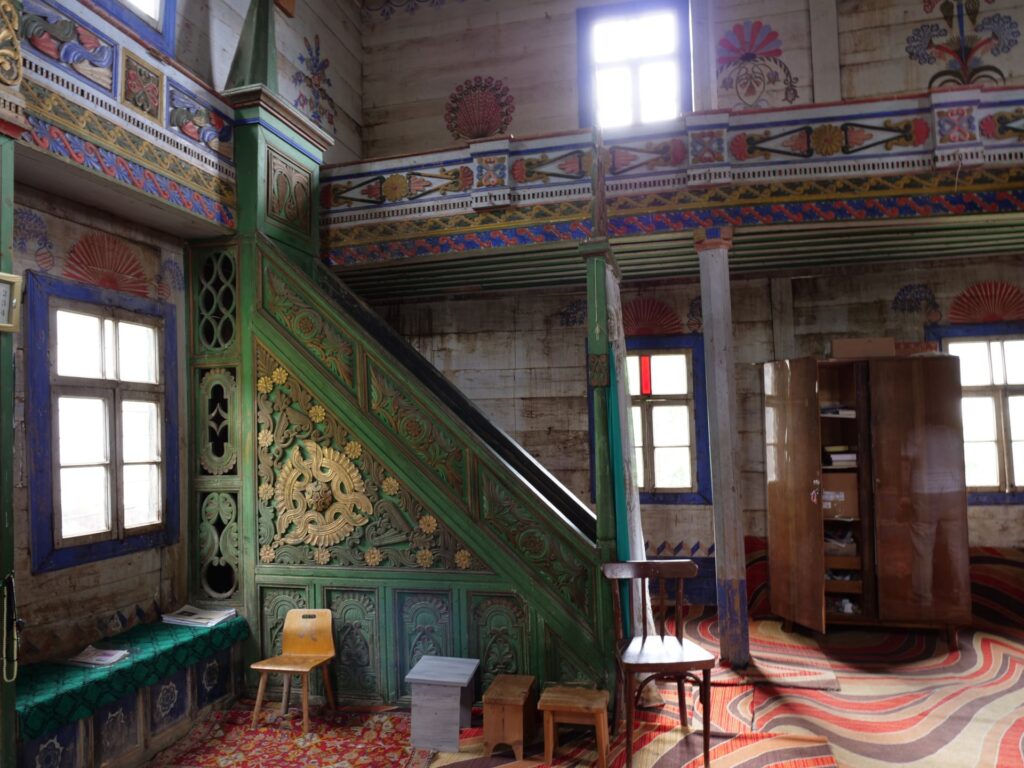
Like that in Dghvani, many of Adjara’s mosques are in various states of disrepair, and some have entirely collapsed. During the Soviet era, the mosques were repurposed and used as crop storage units or offices for state officials. Today, Georgia’s government, intimately intertwined with the Georgian Orthodox Church and mired in political crisis, has little to no political will to maintain these treasures of the Georgian Muslim community. Meanwhile, Adjaran villagers are rarely active enough in religious affairs or wealthy enough to update the mosques themselves.
The result is a “preservation by neglect,” write architects Suzanne Harris-Brandts and Angela Wheeler in “The Wooden Mosques of Adjara,” a 2018 book that documents the region’s unique Islamic architecture.
The mosques “conflict with various state preservation ideologies,” they write. “They have been viewed as too Muslim for 20th-century communist ethnographers, too Turkish for contemporary Georgian nationals, and too Georgian for modern Ottoman nostalgists.”
Since the collapse of the Soviet Union, Orthodox Christianity has been integral to what it means to be Georgian for the vast majority of the country’s 4 million people. The extent to which Georgians cling to their Christian identity is only compounded by their country’s geographical position. Mostly surrounded by majority-Muslim nations or regions of Russia, many Georgians see their country as a Christian holdout.
On paper, Georgia is 83% Orthodox, with Muslims forming the second-largest religious group at nearly 11%, followed by smaller populations of Armenian Apostolics, Georgian Jews and Catholics.
A significant number of that Muslim population are not ethnic Georgians, but belong to minority populations of other ethnic groups that ended up within Georgia’s borders. Georgian Muslims, the majority of whom are from Adjara, some 115,000 people, are often glossed over, forgotten about or actively marginalized, as has been the case with the state’s efforts to halt the construction of a new mosque in Adjara’s capital Batumi, a seaside city popular with Russian and Gulf tourists. That there are smaller, unique and stunningly beautiful mosques across the Adjaran mountainsides is far from the national consciousness.
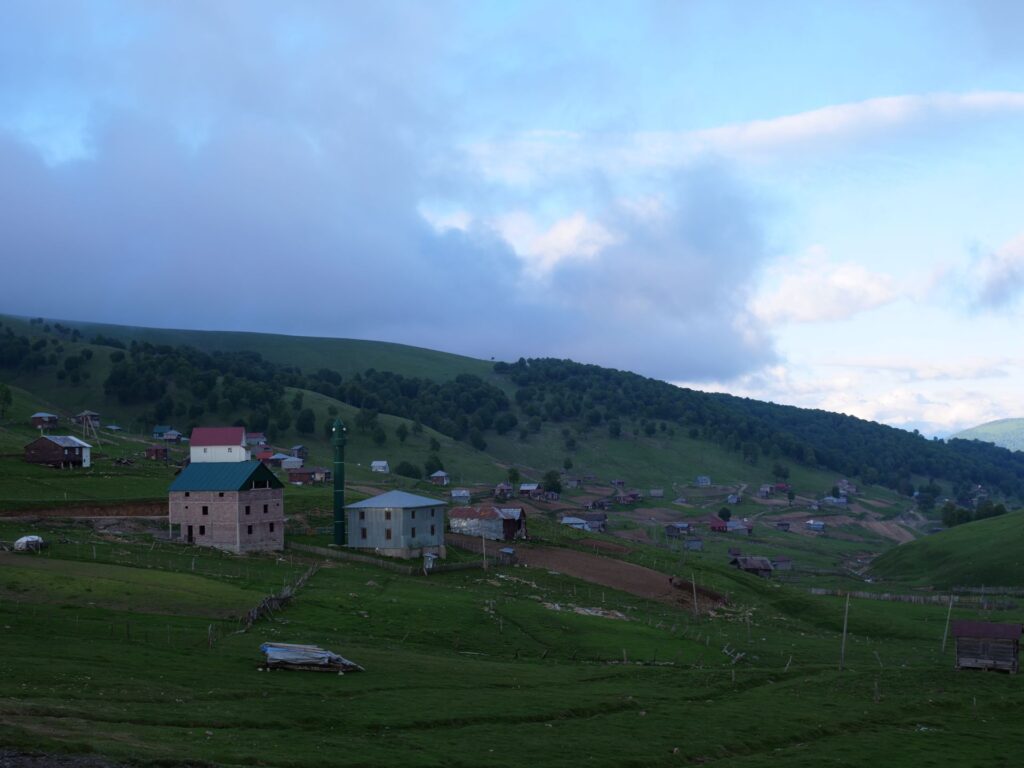
“There are other Muslim communities in Georgia, but those are ethnic Azeris. That was acceptable for Georgians and for the Georgian government, but to them there is no such thing as a Georgian Muslim. If you are Muslim, then you aren’t Georgian,” explained Tariel Nakaidze, an independent MP, member of the Adjaran Muslim community, and former chair of Georgia’s Muslim Union. We spoke at his office in Tbilisi’s parliament. A Georgian flag hung behind his desk, displaying its five red crosses across a white background.
“These communities feel like they are oppressed by the government and this narrative,” Tariel continued.
Tariel and I were joined by Zaza Mikeladze, co-founder of Solidarity Community, a youth organization promoting Georgian Muslim rights, working in conjunction with other minority groups in the country. The men explained to me that Tariel represented an old guard of Adjaran Muslims. He had studied religion and Arabic in Turkey and Egypt, and was part of a generation relearning Islam after the collapse of the Soviet Union. Zaza, of a younger generation, was more interested in Georgian Muslim political engagement and Georgian Muslims taking a more active role in society at large.
“Georgia is not homogenous,” Zaza said. “Our objective is to have Islam and Muslim Georgians represent the Georgian identity as well.”
Despite the entrenchment of Orthodox Christianity in everyday Georgian life, a younger, urban class of Georgians have begun to break with this status quo. There is now a visible portion of the population, especially in Tbilisi, calling for a more pluralistic society, who also voice concern over the integration of church and state. Over the past few years, street protests in the capital have drawn thousands and discontent with the ruling party remains high, especially as the Georgian leadership has taken steps toward Russia, such as trying to pass a Putin-style foreign agents law and preventing Russian anti-government activists from entering the country.
Solidarity Community is hoping to capitalize on this wave of anti-government fervor. The group is also trying to promote awareness, both within Georgia and internationally, of the rural Adjaran mosques. However, that effort is not without setbacks.
“Last year, I went to the tourism authority and asked them to highlight the mosques,” Zaza said. “The response that I got was ‘We are not interested in religious tourism in Georgia.’” Zaza shook his head and laughed at the irony — much of Georgian tourism revolves around ancient churches and monasteries, which are highlighted on tourist agendas and indicated by official signposts around the country.
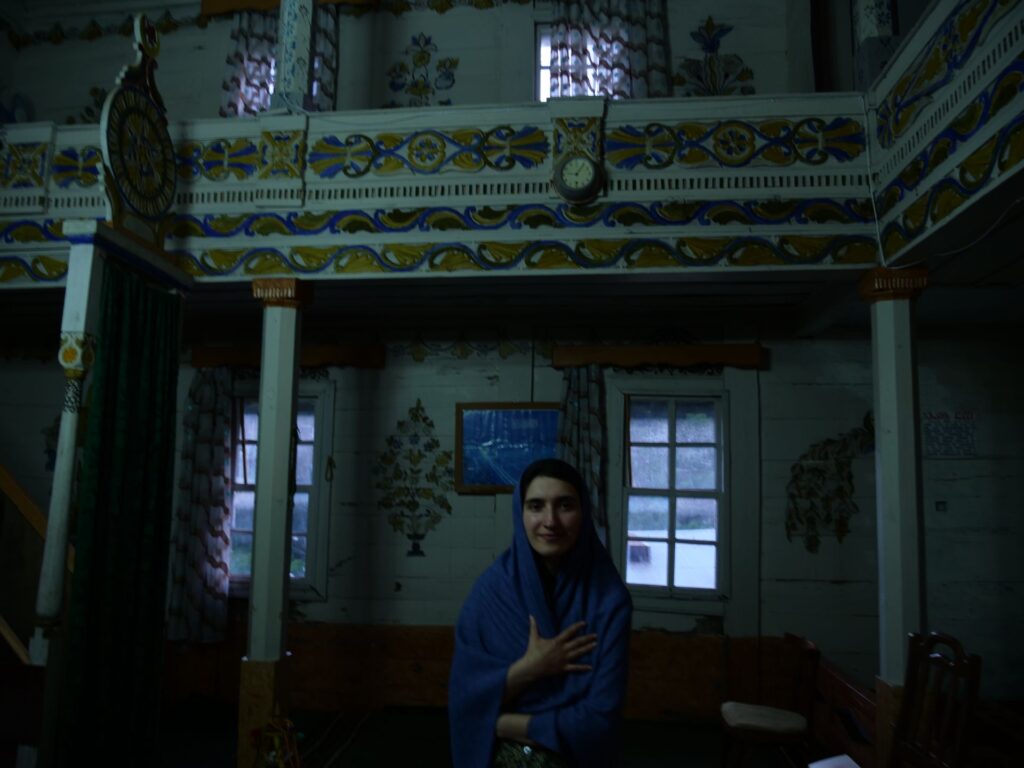
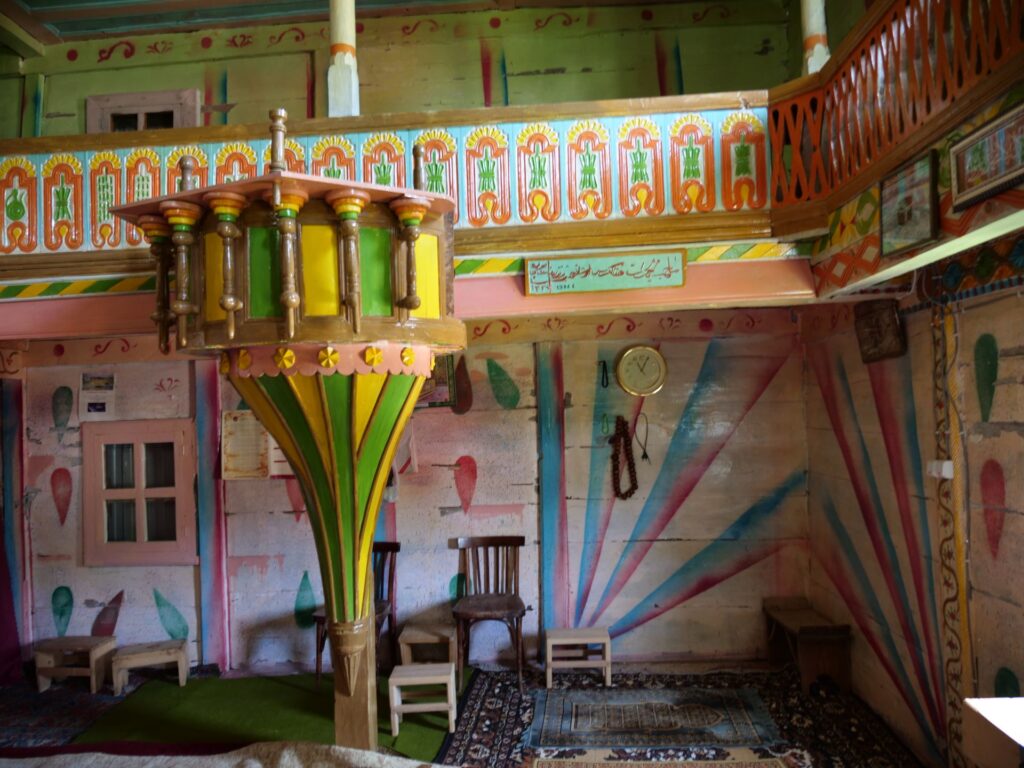
While I was in Adjara, traveling from one colorful mosque to another in a four-wheel-drive van, bouncing along dirt roads that would be impassable in a rainstorm — which happen often here — I met Lia Dekanadze, another co-founder of Solidarity Community. We chatted over beef kebab and stewed beans at a restaurant in Khulo, the center of the Georgian Muslim community in upper Adjara. Lia became increasingly animated when speaking about the issues her community faced, including how Georgian Muslims are ostracized from political life and the religious radicalization of young people, which, while rare, does happen. Lia studied Arabic while at university in Tbilisi and is passionate about feminist Islamic ideology. She wants to be Georgia’s first female imam.
Lia had told me that Solidarity Community was part of an exhibition in Batumi about Adjaran rural wooden mosques. Yet they found that even in her region’s capital, “people did not know that these mosques exist.”
Solidarity Community is trying to draw a link between Muslim Adjarans and the rest of Georgian society via the mosques, since the mosques’ interior designs are uniquely Georgian. By doing so, the organization hopes to push back against the idea that Adjaran culture is solely derived from the Ottoman Empire.
“We don’t just consider these mosques religious places, but also part of national culture. These were built for Georgians, by Georgians,” Lia told me.
Many Georgian Muslims are indistinguishable from other ethnic Georgians by name, which makes Georgia different from many other countries that are home to Muslim and Christian populations, where names often indicate a person’s religion.
Because of this, Georgian Muslims can often pass as Christians. Such was Lia’s experience while completing her university studies in Tbilisi. However, when her classmates discovered she was Muslim, “They called me a Tartar,” Lia said. In other words, she was an outsider.
After we left the restaurant, Lia took me to her favorite mosque, a square silver building with a small minaret perched on a mountain in Nigazeuli village, a small cluster of Adjaran wood cabin-like homes set above the main road.
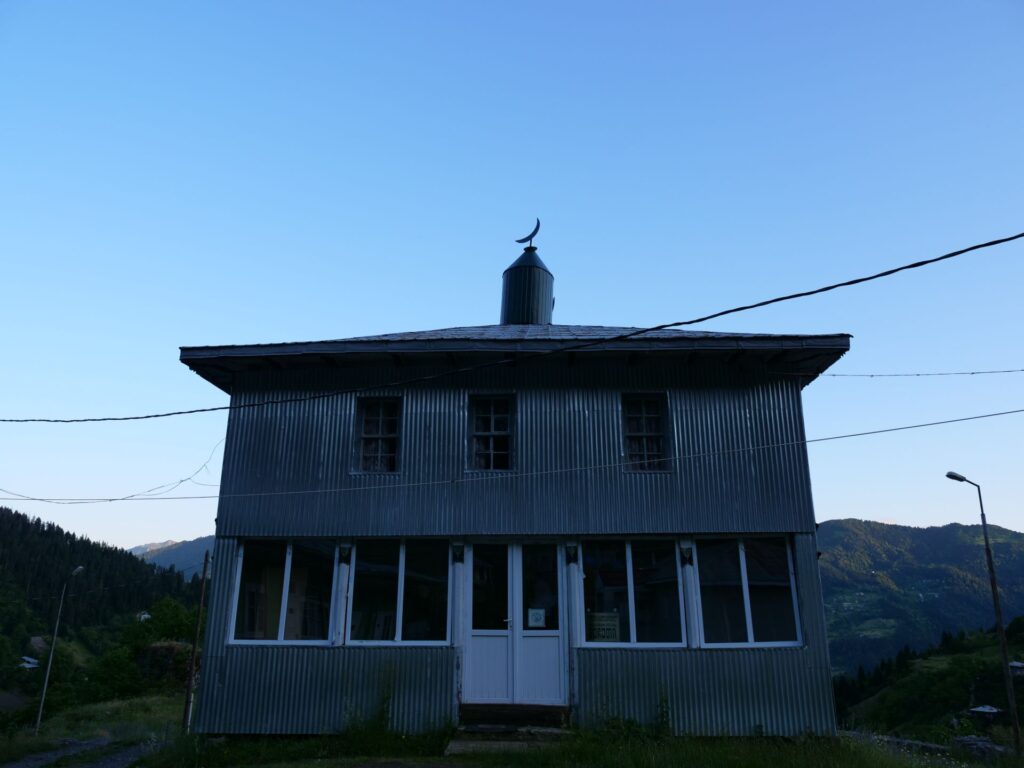
Nigazeuli mosque is in a prominent position, on a peak overlooking the valley, a location often occupied by Georgian churches. Unlike the mosque in Dghvani, the Nigazeuli mosque’s wooden exterior was covered in corrugated steel sheeting in order to protect it from rainy weather. The practice is common in western Georgian homes. In Adjara, some local communities have been able to pool resources for their mosques’ protective coverings.
We were at the mosque at sundown. The adhan resounded from across the road, from a loudspeaker attached to the muezzin’s nearby home — a friendly villager who chatted with us as we waited for the call to prayer to end told us the muezzin preferred not to have to walk to the mosque five times a day.
Inside Nigazeuli mosque, the last of the day’s light highlighted a main prayer room adorned with hand-carved gold and blue floral motifs in the wall trim, mihrab and minbar. Lia’s eyes lit up as she walked around. “In school, we were always going to churches on field trips, but it is in here, in a mosque, where we feel like this is for us,” she said.
Solidarity Community is in a bind when it comes to how best to preserve Adjara’s wooden mosques. On one hand, the organization would like the government to recognize the mosques as official cultural heritage monuments. Around two dozen of Adjara’s wooden mosques, especially in Keda district, a region closer to the Black Sea, have this designation. However, these mosques are only allowed to be repaired through government-sponsored upkeep. If the Georgian government neglects to repair the mosques, there is nothing local communities can do about it because the mosques have become the government’s responsibility.
“Mosques are falling down in Keda because of this,” Lia said. “We changed our strategy to general recognition [from the state] because if they have cultural heritage status, the government won’t fix them.”
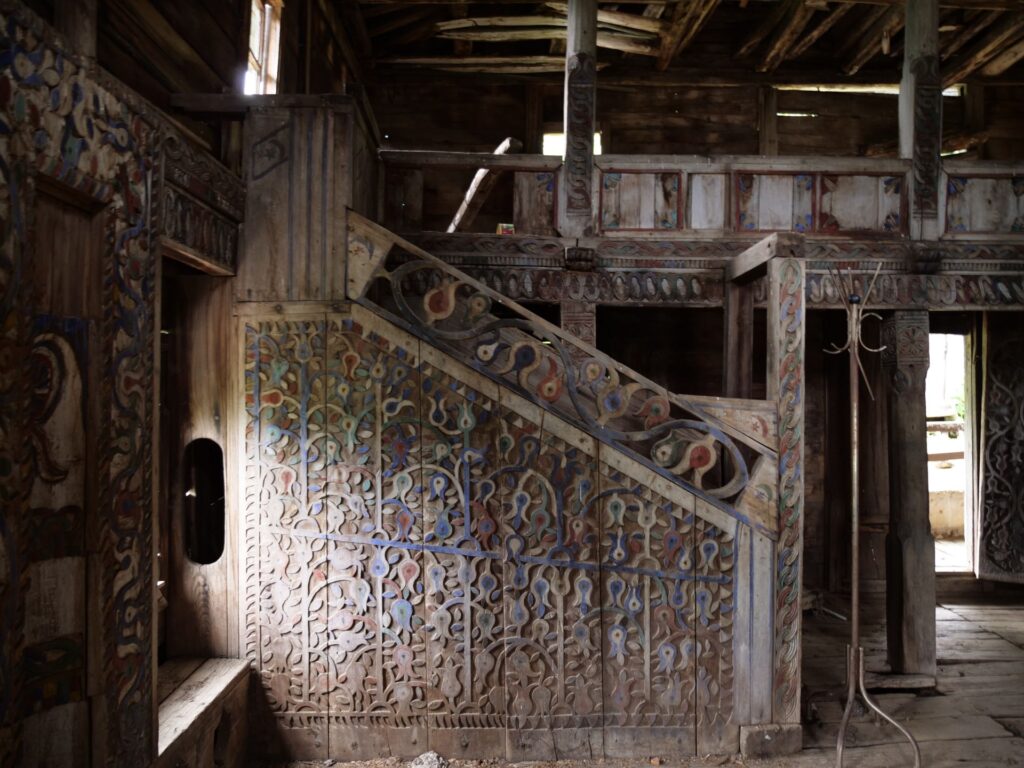
One day after meeting Lia, and just after my visit to the mosque in Dghvani with the imam Putkaradze, I wandered into Zvare mosque, no longer in use. It’s in Keda district, where the air becomes thick with moisture from the Black Sea and more houses host grapevines than up the road in Khulo.
Inside Zvare mosque, crumbling wall trim and columns still boasted rich, yet fading red, blue and green hues. Cowpats dotted the floor by the mihrab. The minbar was buckling, its side panel adorned with overlapping rows of hand-carved poppies, still beautiful despite the surrounding disrepair. This mosque is on the official list of cultural heritage monuments in Adjara, but here it sat, in the early stages of collapse. Just as I was about to leave, a little black dog wandered in to greet me, and we both had to be careful not to fall through broken floorboards on our way out.
Become a member today to receive access to all our paywalled essays and the best of New Lines delivered to your inbox through our newsletters.



